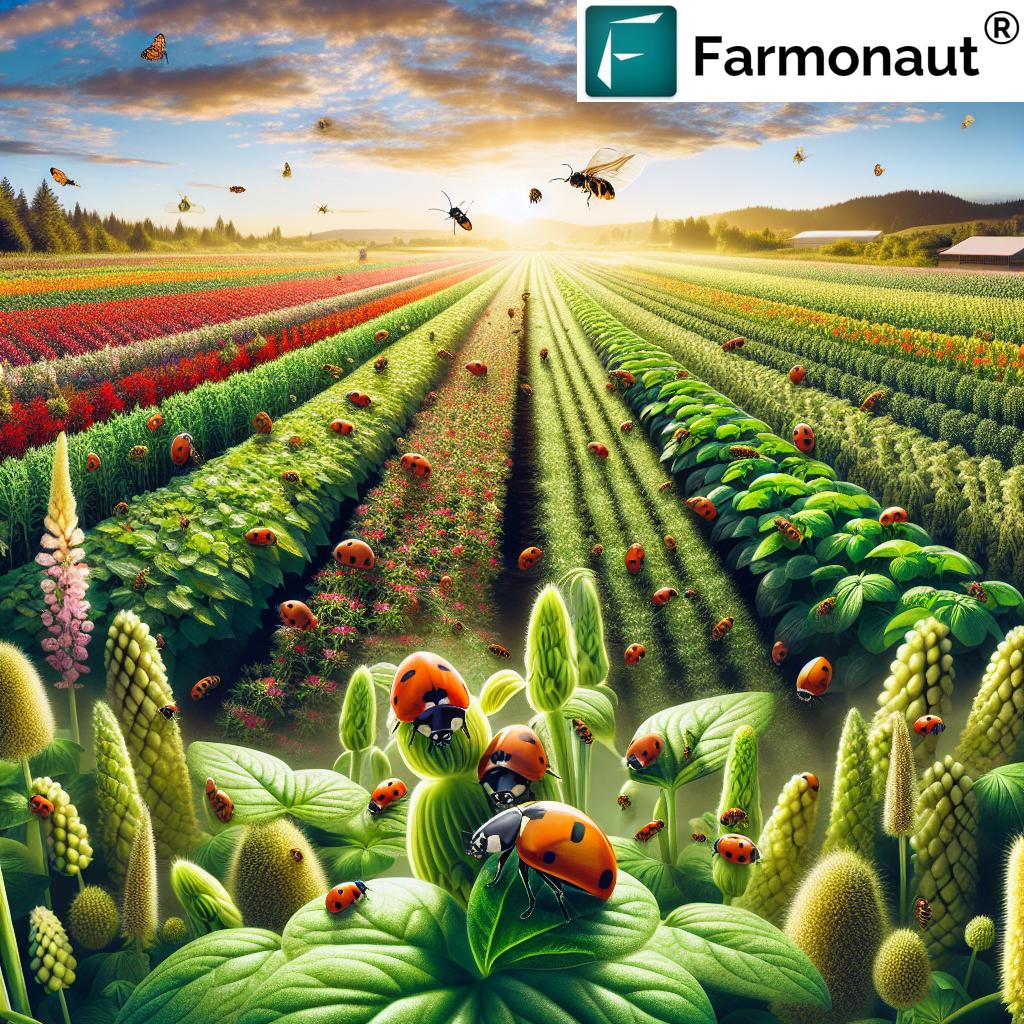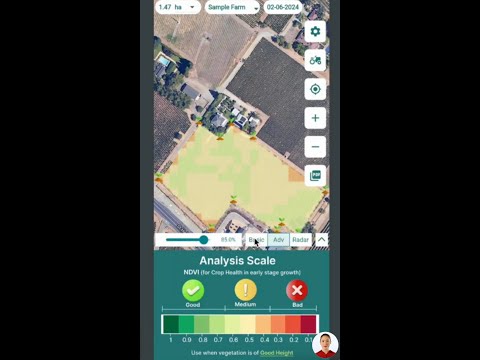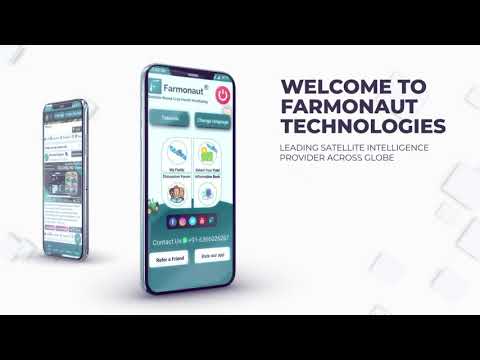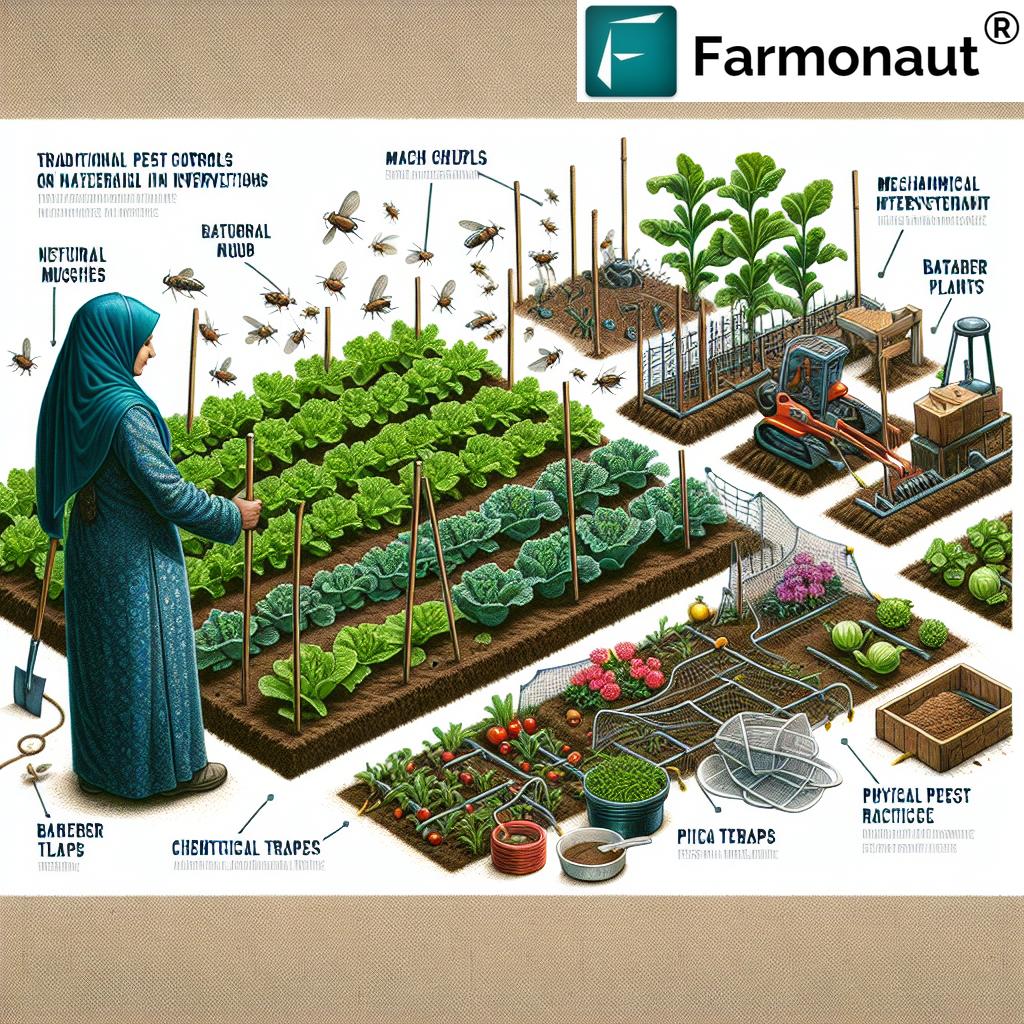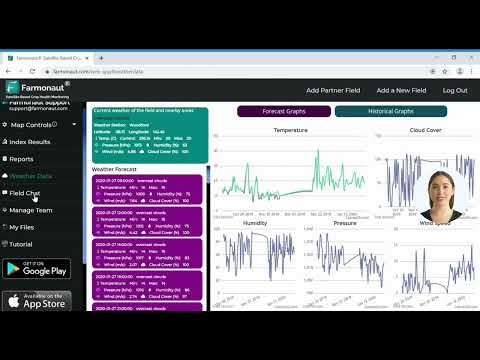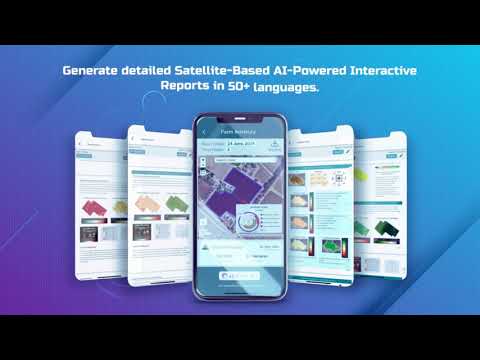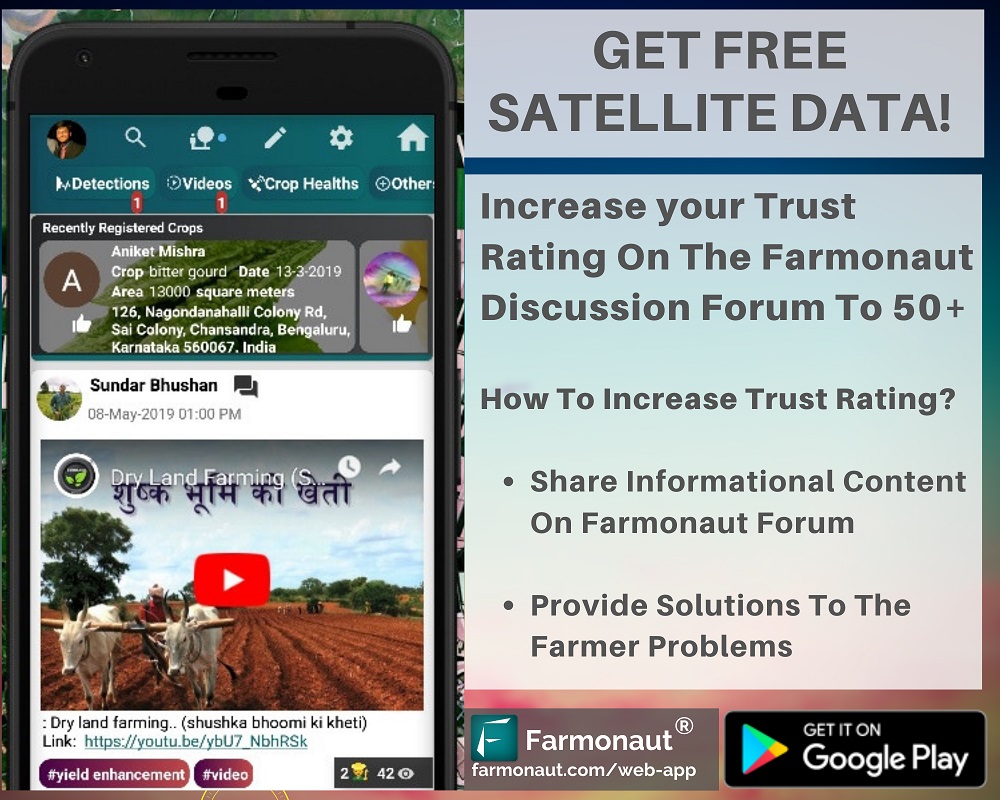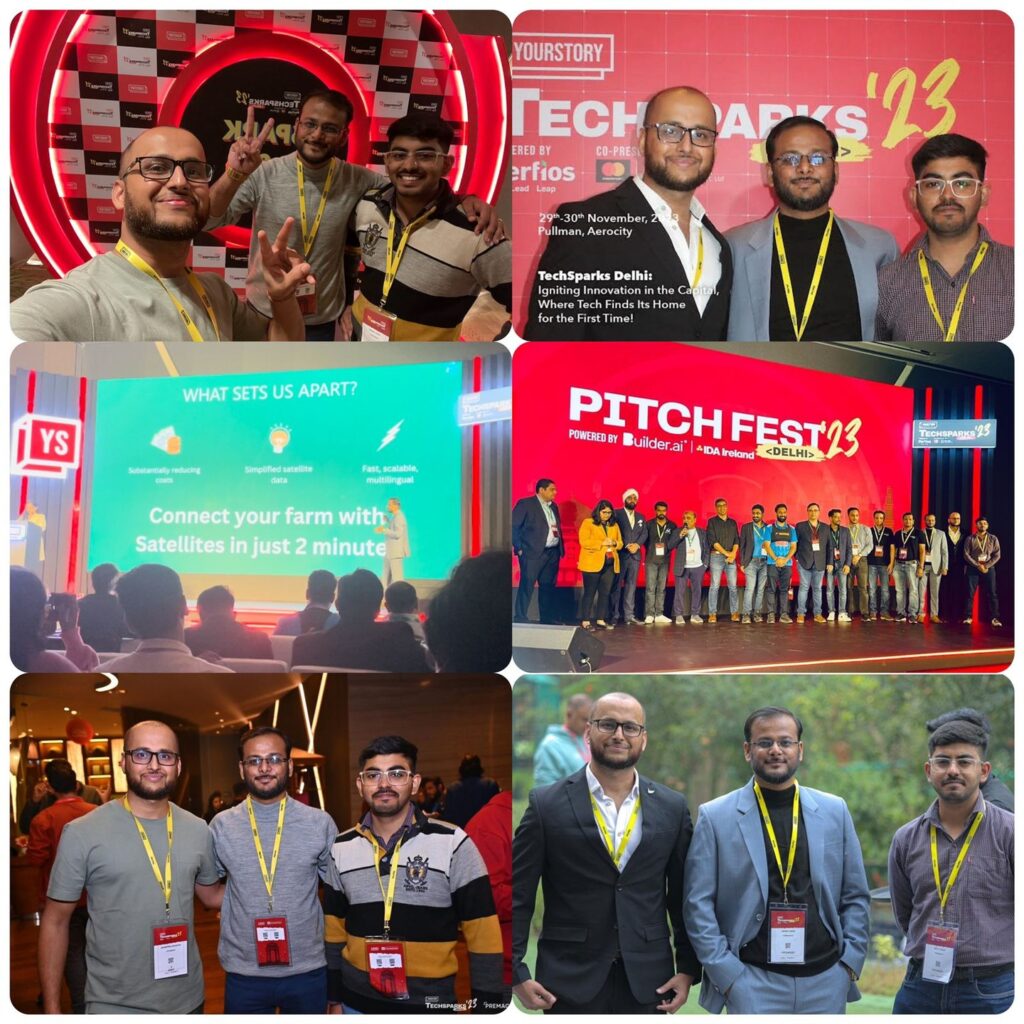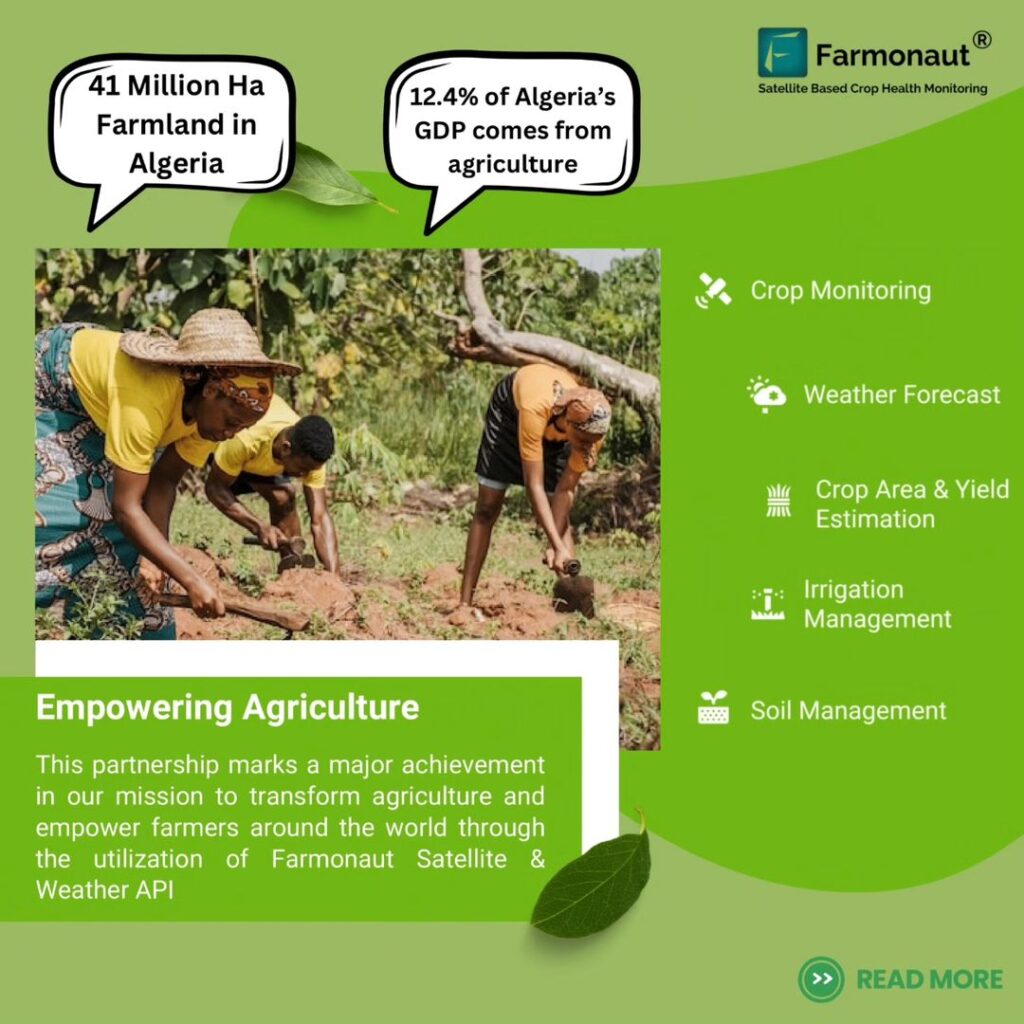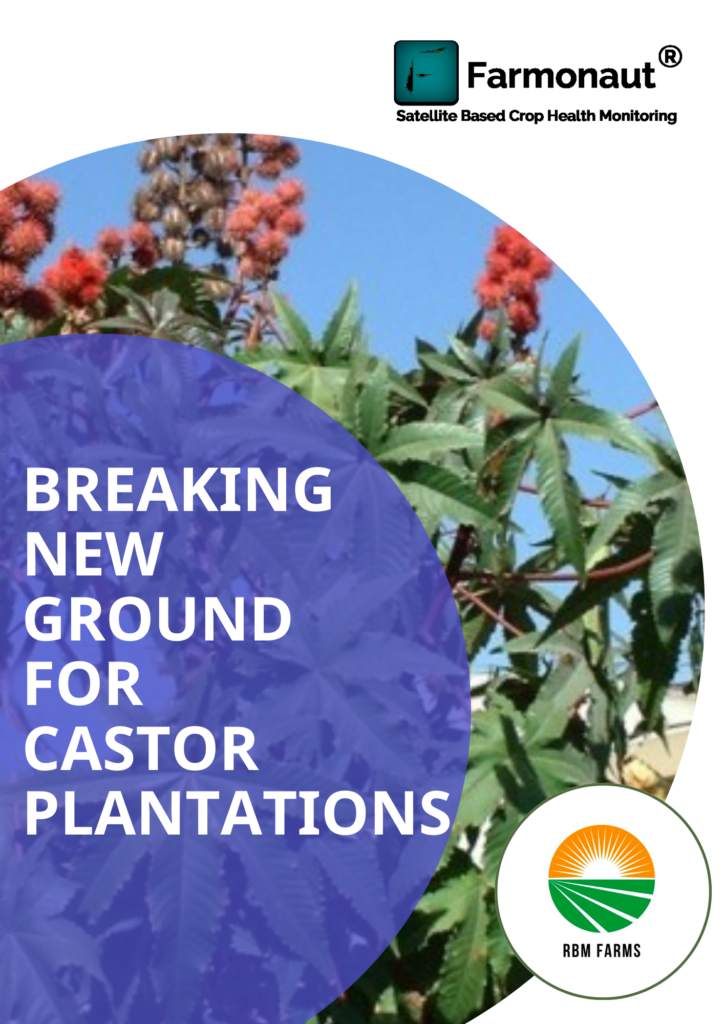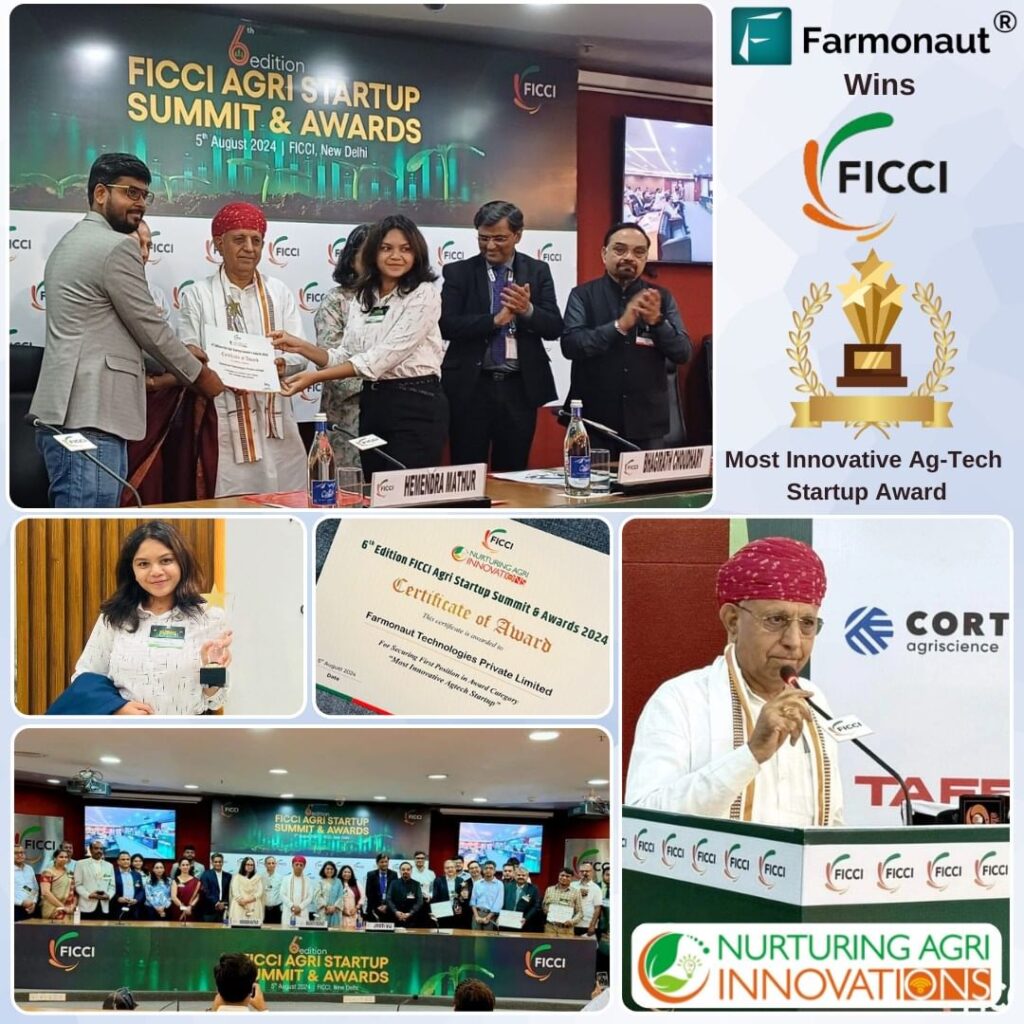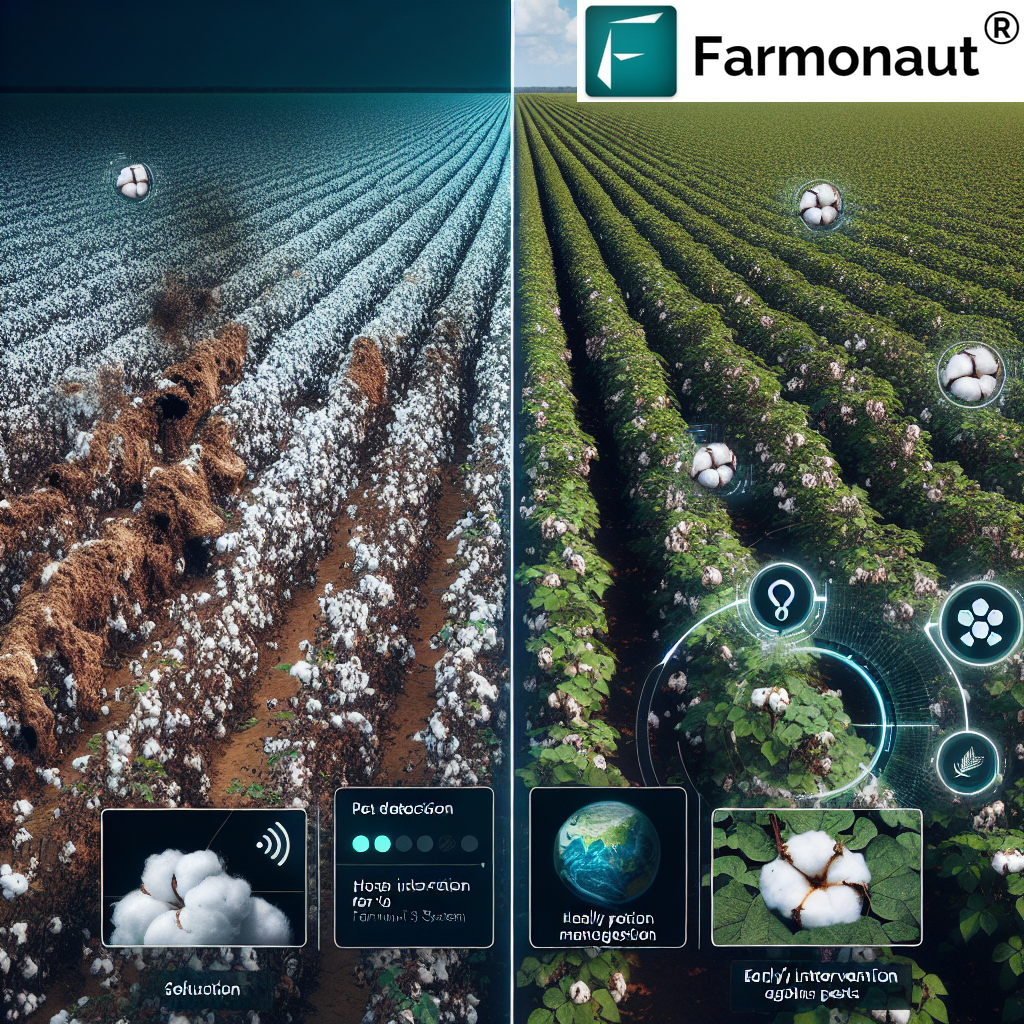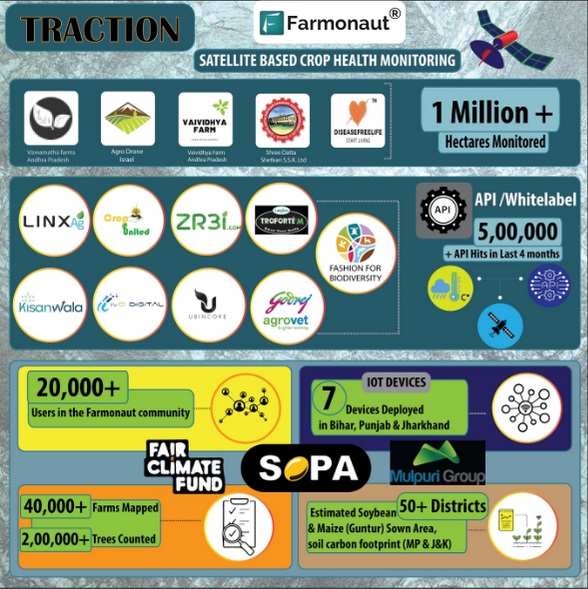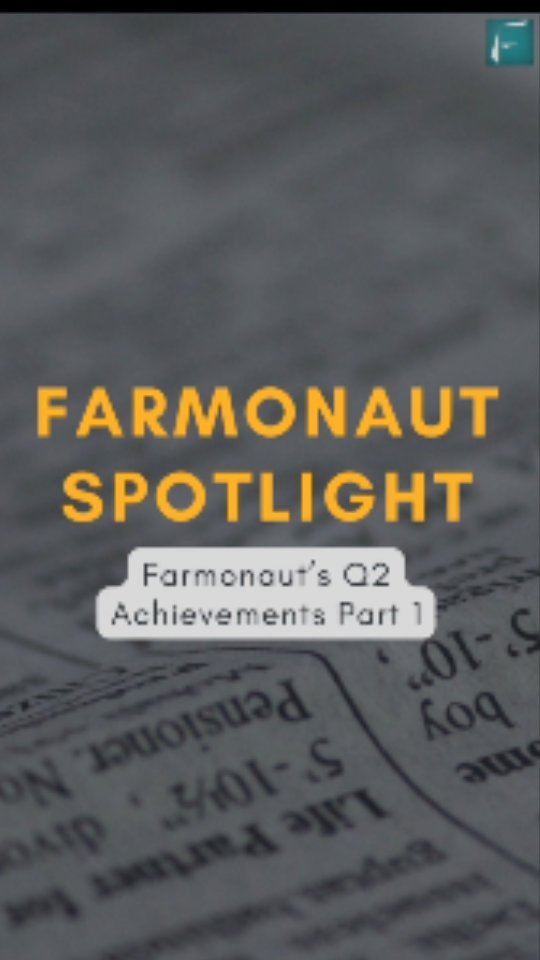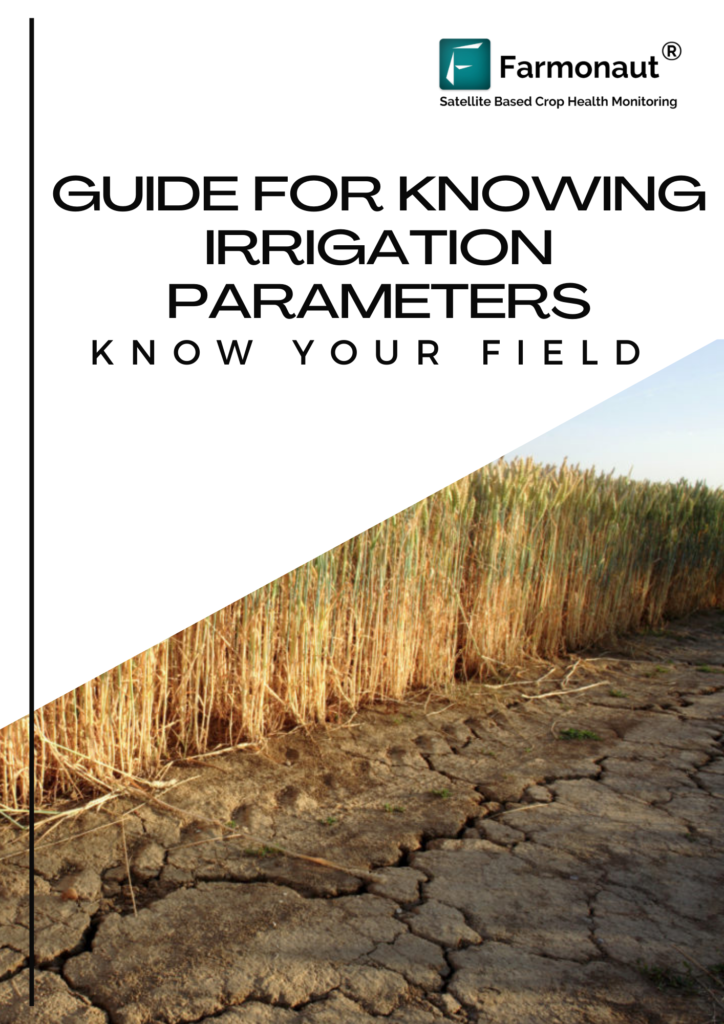Pest Management: 7 Powerful Sustainable Control Strategies
Table of Contents
- Understanding Pests: Types and Impact
- Why Sustainable Pest Management Matters
- 7 Powerful Sustainable Pest Control Strategies
- Integrated Pest Management (IPM)
- Biological Pest Control
- Cultural Pest Control Methods
- Mechanical Pest Control Methods
- Physical Pest Control
- Chemical Pest Control
- Non-Pesticide Management
- Comparative Strategy Table: Sustainable Pest Management Methods
- Farmonaut: Enabling Smart, Sustainable Pest Management
- Economic and Environmental Considerations
- Challenges in Pest Management Today
- FAQ: Pest Management
- Conclusion
Pest management is a critical practice aimed at controlling and preventing the damage caused by various pests—including insects, weeds, rodents, and pathogens—across diverse environments such as agriculture, urban settings, and natural ecosystems. Effective pest management not only safeguards human health and property but also preserves biodiversity, ensures food security, and promotes sustainable farming. In this guide, we’ll delve into seven powerful, sustainable pest control strategies, exploring how each aligns with environmentally friendly pest management, and how you can apply these practices on your farm, in your urban space, or even in your garden.
Understanding Pests: Types and Impact
To implement truly effective pest management strategies, we must first recognize what pests are and how they impact our environment and activities. Pests are organisms that adversely affect human activities by damaging crops, structures, or spreading diseases. Their management is essential for ensuring food security, protecting property, and maintaining ecosystem balance.
Pest Classification: Key Categories
- Insects and Mites: These include species like aphids, beetles, and spider mites that feed on plants, often causing visible damage or spreading pathogens.
- Weeds: Unwanted plants that compete with our crops for resources like water, sunlight, and soil nutrients.
- Pathogens: Bacteria, viruses, and fungi that cause plant and animal diseases, reducing yield and quality.
- Vertebrates: Rodents and birds are notorious for consuming or contaminating food supplies, further emphasizing the need for comprehensive pest control methods.
A pest can be any organism—plant, animal, or microbe—that negatively affects human welfare by damaging structures, attacking our food sources, spreading illnesses, or competing with desired species for essential resources.
How Pests Affect Agriculture, Urban Spaces, and Ecosystems
- Crops: Insects like aphids, beetles, and mites feed directly on crop tissues, while weeds outcompete crops for light, water, and nutrients.
- Urban Areas: Rodents and pathogens can contaminate surfaces, destroy property, and create health hazards.
- Natural Ecosystems: Invasive pests disrupt native biodiversity, potentially causing cascading effects throughout ecological communities.
Why Sustainable Pest Management Matters
Traditional pest control often relied heavily on chemical pesticides. While these can be effective, their overuse has led to adverse environmental effects, pesticide resistance, declining non-target species such as natural enemies and pollinators, increased human health risks, and even economic losses due to crop export restrictions.
That’s why a shift towards sustainable pest management—utilizing a combination of integrated, natural, cultural, and judicious chemical control methods—provides the greatest protection for crops, ecosystems, and people.
7 Powerful Sustainable Pest Control Strategies
Here, we introduce seven robust, sustainable pest management strategies, each combining effectiveness with a focus on environmental friendliness and long-term control.
1. Integrated Pest Management (IPM): The Gold Standard
Integrated Pest Management (IPM) is an environmentally sensitive approach that combines multiple strategies including identification, monitoring, prevention, and control to manage pest populations efficiently and sustainably. The core tenets of IPM include:
- Accurate Identification & Regular Monitoring: Use of field scouting, traps, and modern data (including satellite-based) to regularly assess the presence and impact of pests such as aphids, beetles, mites, weeds, and pathogens.
- Setting Action Thresholds: Defining the specific pest population levels at which intervention becomes necessary to avoid unacceptable crop damage.
- Prevention: Emphasizing crop pest prevention by integrating cultural practices such as crop rotation, sanitation, and using resistant plant varieties.
- Control: When needed, implementing a hierarchy of controls, always favoring the least risky methods (e.g., biological before chemical solutions).
IPM focuses on reducing reliance on chemical pesticides, thereby protecting crops, human health, and the environment—making it central to any sustainable pest management plan.
Advantages of IPM
- Reduces pesticide application by up to 50%.
- Enhances crop yields through holistic management.
- Protects beneficial species and preserves local biodiversity.
- Lowers environmental and human health risks.
Farmonaut’s satellite-based farm management system empowers farmers to practice IPM more efficiently. By leveraging real-time crop health monitoring and AI-based pest risk assessment, Farmonaut helps users achieve early pest identification and precise, data-driven interventions—optimizing yield and reducing chemical inputs. Learn how Farmonaut’s large-scale farm management solution supports pest management at scale.
2. Biological Pest Control: Harnessing Nature’s Own Defenses
Biological pest control leverages natural enemies of pests—such as predators, parasitoids, and pathogens—to reduce pest populations in a sustainable manner.
- Predators: Examples include lady beetles eating aphids, and lacewings consuming spider mites and insect eggs.
- Parasitoids: Special wasp species lay their eggs inside insect pests, which then perish as the parasitoid larva matures.
- Pathogens: Fungi, bacteria, and viruses can be formulated into bio-pesticides, which specifically infect and debilitate pest insects or weeds.
This approach is a pillar of integrated pest management and crop pest prevention, limiting collateral environmental damage and preserving ecosystems’ natural balance.
Practical Examples
- Releasing Trichogramma wasps to control caterpillar outbreaks.
- Encouraging native birds for rodent and insect control in large-scale crop systems.
- Application of Bacillus thuringiensis (Bt), a bacteria toxic only to certain insect larvae, thus ensuring environmentally friendly pest control.
Planning to increase biological control success?
Use Farmonaut’s digital plantation advisory to receive real-time recommendations on monitoring beneficial insect populations and optimizing eco-friendly pest management routines.
3. Cultural Pest Control Methods: Redesigning Practices for Prevention
Cultural pest control methods involve changes to farm or garden practices that disrupt pest establishment, survival, and reproduction. These strategies focus heavily on prevention and are essential in IPM.
Key Cultural Techniques
- Crop Rotation: Prevents buildup of crop-specific pests by alternating plant species over seasons.
- Intercropping: Planting different crops together can interrupt pest colonization, since pests are less likely to find host plants in mixed environments.
- Adjusting Planting Dates: Avoiding peak pest periods by planting early or late compared to normal pest cycles.
- Field Sanitation: Removing plant debris, weeds, and volunteer plants eliminates breeding sites for pests and reduces pathogen survival.
- Push–Pull Strategies: “Push” repellent plants deter pests, while “pull” trap crops lure them away from main crops—a method extensively used in sustainable maize farming to manage stemborers and weeds.
Cultural techniques are often low-cost, simple, and highly compatible with both traditional and modernized agricultural systems.
4. Mechanical Pest Control Methods: Tools and Technology in Action
Mechanical pest control employs physical tools or actions to remove, trap, or block pests from causing damage. These straightforward methods are highly visible and often essential for immediate pest management.
- Hand Picking: Removing pests such as beetles or caterpillars directly from plants.
- Traps: Using sticky traps, pheromone traps, or light traps to monitor and reduce populations of flying insects.
- Barriers: Row covers, insect-proof nets, and fences physically exclude pests from crops.
- Mulching: Certain mulches prevent weed germination and disrupt insect life cycles.
Mechanical control excels in small-scale and high-value crop settings and is frequently integrated with other sustainable pest management practices.
5. Physical Pest Control: Environmental Manipulation for Crop Protection
This strategy uses abiotic factors—such as temperature, moisture, or light—to create an environment that is inhospitable to pests, contributing to both prevention and active management.
- Soil Solarization: Covering moist soil with tight plastic sheets to “cook” and kill soil-borne pathogens, nematodes, weed seeds, and some insect pests through solar heat.
- Water Management: Flooding fields (particularly in rice cultivation) to disrupt insect, weed, and nematode lifecycles.
- Temperature Treatments: Using hot-water seed treatment or cold storage to kill pests associated with seeds or stored crop products.
Physical methods are especially valued for their effectiveness without introducing new chemicals into the environment.
6. Chemical Pest Control: Precision and Judicious Use
Chemical pest control involves the use of pesticides—herbicides, fungicides, insecticides, and rodenticides—to reduce or eliminate unacceptable pest population levels. Within integrated pest management, utilising chemicals is reserved as a last resort:
- Spot Treatments: Targeted, rather than blanket, application reduces overall pesticide volume and risk.
- Selective Pesticides: Choosing chemicals that reduce non-target effects, such as using biological or organic-certified pesticides when possible.
- Application Timing: Applying pesticides at the most vulnerable stage of a pest’s life cycle or when environmental risks are lowest.
We use chemical methods sparingly and in strict accordance with environmentally friendly pest control strategies, always considering human safety, crop needs, and regulatory requirements.
Need seamless access to real-time pest risk data for targeted spraying?
Farmonaut’s robust satellite and weather API makes it easy to integrate crop health and pest forecast data directly into your farm management software. For more information, view our API Developer Docs.
7. Non-Pesticide Management (NPM): Chemical-Free, Nature-First Solutions
Non-pesticide management encompasses a suite of techniques designed to suppress pests without chemicals, focusing on promoting natural ecological balance and resilience.
- Introducing Natural Predators: Similar to biological control but emphasizes native species and in-field habitat management to encourage beneficial organisms.
- Organic Pesticides: Utilization of plant-derived oils (like neem), soaps, or mineral-based dusts to deter or incapacitate pests.
- Cultural and Physical Practices: Regularly rotating crops, managing irrigation, and rigorous sanitation all help control pest establishment and reproduction.
These methods are central to restoration of ecosystem balance, and are especially effective in organic and certified sustainable agricultural systems.
Need traceability for your food supply?
Explore Farmonaut’s blockchain-based traceability solutions for verifiable, transparent crop histories—a critical asset in sustainable pest management for high-value food brands and processors.
Comparative Strategy Table: Sustainable Pest Management Methods
| Strategy Name | Description | Effectiveness (Estimated %) |
Environmental Impact | Estimated Cost | Best Use Cases |
|---|---|---|---|---|---|
| Integrated Pest Management (IPM) | Combines multiple pest control strategies based on continuous monitoring and thresholds. | 85–95% | Low | Medium | Universal (crops, urban, horticulture, greenhouse) |
| Biological Pest Control | Deploys natural enemies (predators, parasitoids, pathogens) to control pests. | 70–90% | Very Low | Low–Medium | Field crops, vegetable farms, organic systems |
| Cultural Pest Control Methods | Modifies farming practices (e.g., rotation, intercropping, sanitation) to prevent pest establishment. | 60–85% | Low | Low | Crop fields, gardens, small-to-large farms |
| Mechanical Pest Control | Uses physical removal (hand-picking), traps, or barriers to manage pests. | 50–75% | Very Low | Low | Gardens, urban farms, greenhouses, high-value crops |
| Physical Pest Control | Targets pests through temperature, moisture, or physical manipulation of the environment. | 55–80% | Low | Low–Medium | Soil-borne, storage pests, rice, nurseries |
| Chemical Pest Control | Applies pesticides selectively under IPM thresholds. | 85–99% (short-term) | Medium–High | Medium–High | Outbreak situations, resistance management |
| Non-Pesticide Management (NPM) | Includes chemical-free options/ecological restoration, such as releasing natural predators and maintaining biodiversity. | 65–80% | Very Low | Low | Organic/sustainable farms, vulnerable environments |
Farmonaut: Enabling Smart, Sustainable Pest Management
To maximize the effectiveness of your pest management strategies, seamless access to actionable, real-time data is vital. This is where Farmonaut stands out—making precision agriculture and sustainable pest management more accessible and affordable for everyone involved in agriculture.
- Satellite-Based Crop Health Monitoring: We use high-resolution multispectral satellite images to monitor vegetation health (NDVI), soil moisture, and water stress. Early detection of stress can highlight pest or disease risks—facilitating timely intervention and protection of crop yields, while reducing unnecessary pesticide use.
- Jeevn AI Advisory System: Farmonaut’s AI engine interprets satellite, weather, and crop data to deliver customized pest control strategies, ensuring that every farm gets region- and crop-specific recommendations for prevention and control.
- Resource and Fleet Management: We help you optimize farm machinery and resources, so that pest interventions are timely, precise, and cost-effective. Discover our fleet management tools designed for agricultural businesses.
- Blockchain-Based Traceability: Our transparent farm-to-fork traceability allows food supply chain stakeholders to document every treatment or pest control step, enhancing trust and compliance. Read more about crop traceability with Farmonaut.
- Carbon Footprinting: Our platform lets users monitor and reduce their environmental impact with real-time carbon data. This supports the implementation of sustainable pest management practices and responsible agriculture policies. Explore carbon footprint tracking capabilities.
Farmonaut provides innovative solutions for decision-makers at every level: from smallholder farmers needing daily crop advisories, to governments and NGOs monitoring landscapes at national scale, and corporate clients requiring transparent, auditable pest management records.
Seeking easy verification of pest-related crop losses? Farmonaut’s automated satellite-based crop loan and insurance verification tool accelerates claims and lending—reducing paperwork and fraud for banks and insurers.
Economic and Environmental Considerations
Every pest management strategy has direct economic impacts—from input costs and labor to yield and food safety. Sustainable approaches minimize long-term costs by reducing the frequency and volume of pesticide purchases, lowering insurance premiums (thanks to reduced crop loss risk), and increasing food market value through eco-certification and traceability.
- Environmental Benefits:
Reduced pesticide applications result in cleaner air, water, and soils. They lower the risk to non-target species—including beneficial pollinators, natural enemies, and local wildlife—safeguarding ecosystem health for future generations. - Human Health:
Limiting chemical exposure decreases acute poisoning risks and long-term health threats to farm workers, local communities, and food consumers. - Regulatory Compliance:
Many global markets now enforce strict pesticide residue and biodiversity protection standards. Sustainable pest management supports compliance and increases access to international markets.
Challenges in Pest Management Today
Despite significant progress, pest management still faces numerous challenges:
- Pesticide Resistance: Overuse of chemistries leads to resistant pest populations, making chemical options less effective and necessitating integrated methods.
- Climate Change: Rising temperatures and shifting weather patterns are altering pest life cycles, expanding the range of crop pests like insects, weeds, and pathogens—and increasing the frequency of infestations in areas like urban environments (e.g., rodent outbreaks).
- Resource Constraints: Smaller farms may struggle to access the latest technologies or pest monitoring tools. Affordable, data-driven platforms like Farmonaut aim to bridge this gap with scalable, easy-to-use tools.
- Urbanization: Urban growth creates new pest habitats while complicating traditional management techniques.
To address these issues, a sustainable, integrated approach—one that is adaptive, evidence-based, and built around continuous innovation—remains our best path forward.
FAQ: Pest Management
-
What is the most sustainable pest management strategy?
Integrated Pest Management (IPM) is considered the most sustainable and effective method. It combines regular monitoring, prevention, cultural, biological, mechanical, and chemical controls (applied only when necessary), minimizing environmental impact and pesticide reliance.
-
Which sustainable pest management methods work best for small farms?
Small farms benefit greatly from cultural control (crop rotation, intercropping, sanitation), mechanical removal, biological controls (like attracting beneficial insects), and data-driven tools such as Farmonaut’s real-time crop health monitoring.
-
How does Farmonaut support integrated pest management?
Farmonaut empowers users by providing real-time satellite analytics, pest risk predictions, and AI-based advisories for precision, early intervention. This aligns with the core principles of IPM—accurate identification, timing, and environmentally friendly control.
-
Why is crop rotation essential for managing pests?
Crop rotation breaks pest and disease cycles by disrupting their habitat and food sources, dramatically reducing population buildup of crop-specific insects, weeds, and pathogens.
-
What are examples of mechanical pest control?
Mechanical methods include hand-picking insects, installing sticky or pheromone traps, using screens or nets to exclude pests, and applying mulch to prevent weeds and seedling pests.
-
Does sustainable pest management cost more?
While some practices may require initial investment (such as biological agents or technology), they often reduce long-term costs by decreasing pesticide purchases, labor needs, and crop loss risk. Sustainable methods also open doors to premium markets and reduce compliance costs over time.
-
Is organic farming the same as sustainable pest management?
Not exactly. Organic farming prohibits synthetic chemicals and emphasizes natural and cultural methods, whereas sustainable pest management combines these with judicious, on-threshold chemical intervention in line with IPM principles.
Conclusion
As we shape the future of agriculture, it’s essential that pest management strategies evolve to prioritize both our short-term productivity and our long-term environmental health. By adopting integrated pest management, biological pest control, cultural pest control methods, mechanical, physical, and non-pesticide approaches, as well as judicious chemical use, we strengthen food security, protect property, and preserve biodiversity.
At Farmonaut, we make adopting these sustainable pest management practices more straightforward by offering real-time, AI-driven insights and accessible, cost-effective tools for every farmer, agribusiness, NGO, and government agency. Our vision: to keep agriculture profitable, resilient, and responsible—no matter where you farm or the scale of your operation.
We invite you to explore our platform, try our satellite-powered farm monitoring tools, and work with us to cultivate a healthier future rooted in responsible pest management.
Download the Farmonaut App or access our web platform today and start implementing the 7 powerful, sustainable pest management strategies that truly make a difference.


